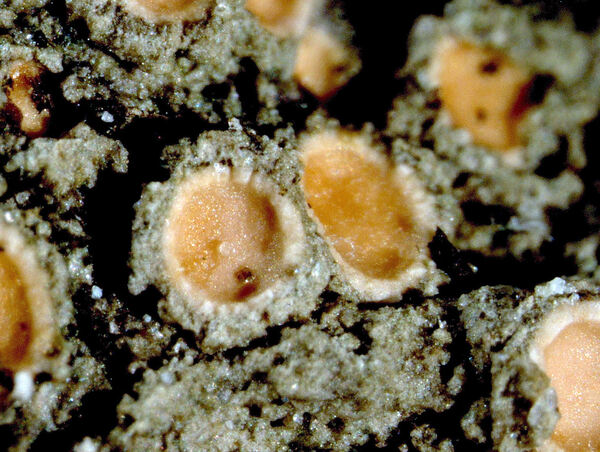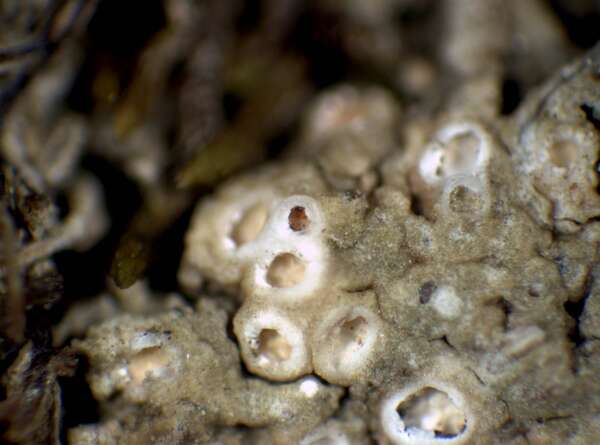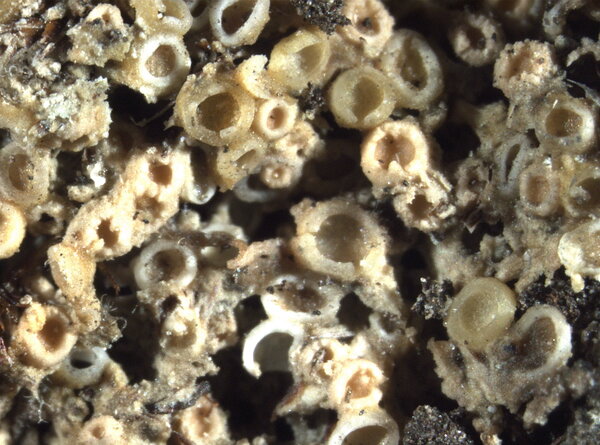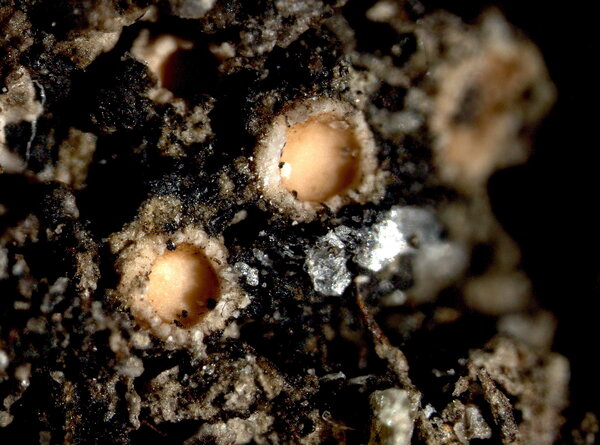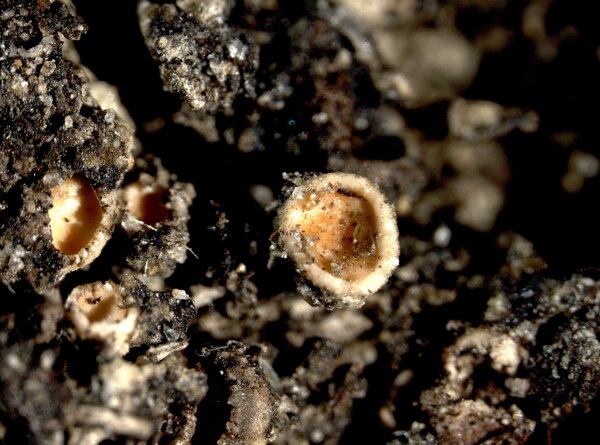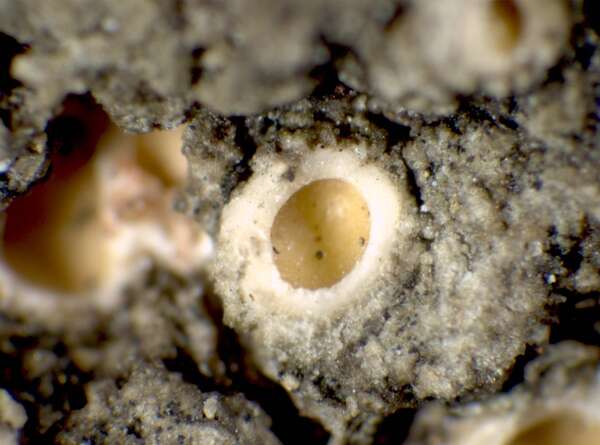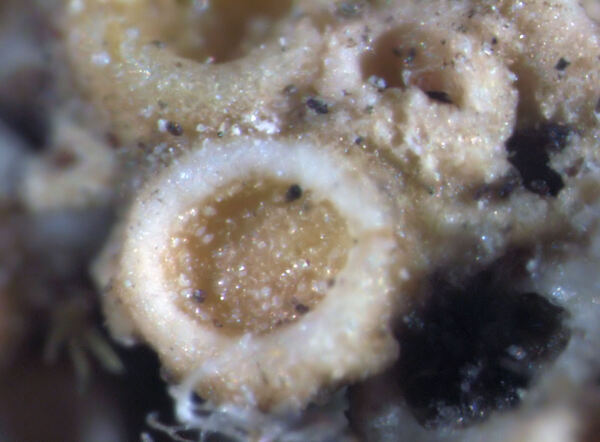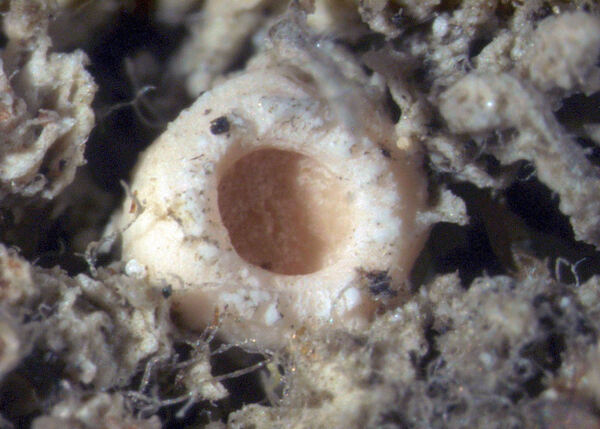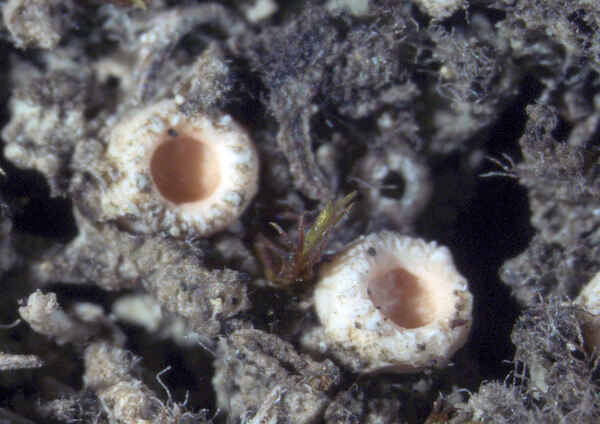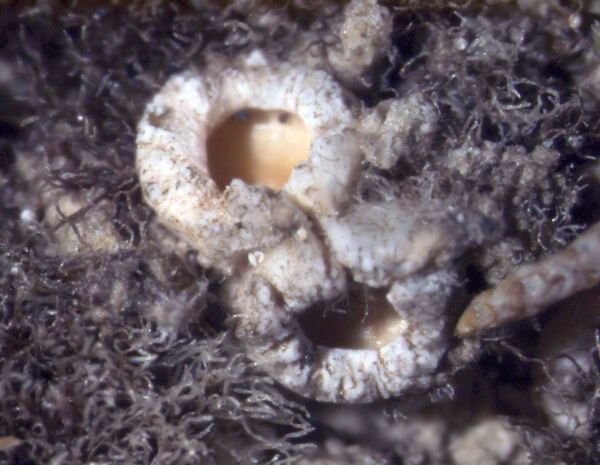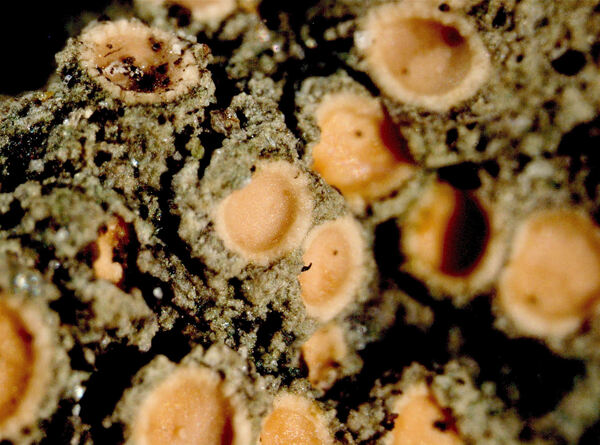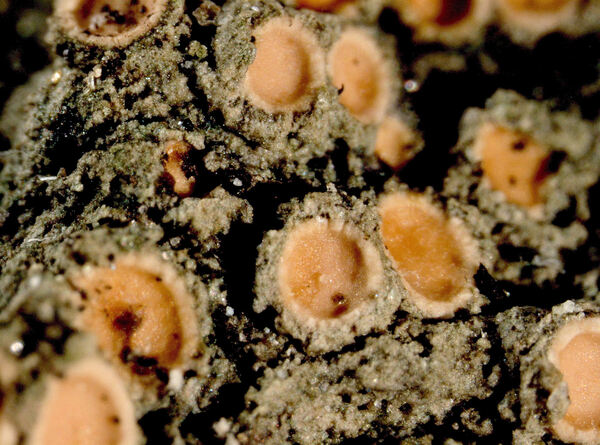Gyalecta foveolaris (Ach.) Schaer.
Lich. Helv. Spicil., 7: 360, 1836. Basionym: Urceolaria foveolaris Ach. - Meth. Lich.: 149, 1803.
Synonyms: Gyalecta wahlenbergiana Ach.; Petractis foveolaris (Ach.) A. Massal.; Secoliga foveolaris (Ach.) A. Massal.
Distribution: N - Frl (Nascimbene & al. 2021), Ven (Nascimbene & al. 2021), TAA (Nascimbene & al. 2006, 2022, Nascimbene 2008b), Lomb, Piem (Morisi 2005), VA (Nascimbene & al. 2021), Lig. C - Marc (Nimis & Tretiach 1999).
Description: Thallus crustose, whitish, olive-yellow or dirty brown, more or less continuous, usually well developed and up to 2 mm thick, very rarely granulose or poorly evident. Apothecia without a thalline margin (but often covered at the base by a thin thalline layer when young), semi-immersed, not constricted at base, (0.4-)0.6-1.5(-2.5) mm across, with a concave, pink to pale orange, epruinose disc, and a thick, smooth to crenulate, whitish to more or less pink-coloured proper margin. Proper exciple prosoplectenchymatous; epithecium colourless to very pale brown; hymenium colourless, 90-140 µm high, the hymenial gel I+ pale blue; paraphyses simple to sparingly branched in upper part, 1.5-2 µm thick in lower part, the apical cells to 3 µm wide; hypothecium colourless to pale yellow. Asci 8-spored, cylindrical to elongate-subclavate, thin-walled, the tip drawn out into a conical point, the wall K/I+ blue. Ascospores mostly (2-)3(-4)-septate, with parallel septa, hyaline, narrowly ellipsoid with rounded ends, (10-)12-18(-21) x (4-)5-7 µm. Photobiont trentepohlioid. Spot tests: K-, C-, KC-, P-, UV-. Chemistry: without lichen substances.
Note: a circumpolar, arctic-alpine lichen found on calciferous soil, occasionally also on rocks, in humid and shaded situations near and above treeline; to be looked for throughout the calcareous Alps.
Growth form: Crustose
Substrata: soil, terricolous mosses, and plant debris
Photobiont: Trentepohlia
Reproductive strategy: mainly sexual
Commonnes-rarity: (info)
Alpine belt: rare
Subalpine belt: very rare
Oromediterranean belt: absent
Montane belt: absent
Submediterranean belt: absent
Padanian area: absent
Humid submediterranean belt: absent
Humid mediterranean belt: absent
Dry mediterranean belt: absent
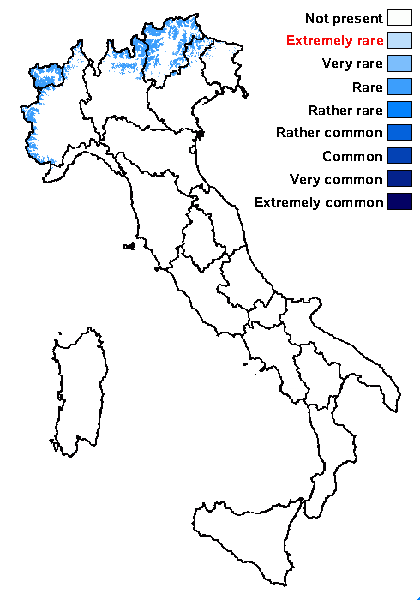
Predictive model
Herbarium samples
Growth form: Crustose
Substrata: soil, terricolous mosses, and plant debris
Photobiont: Trentepohlia
Reproductive strategy: mainly sexual
Commonnes-rarity: (info)
Alpine belt: rare
Subalpine belt: very rare
Oromediterranean belt: absent
Montane belt: absent
Submediterranean belt: absent
Padanian area: absent
Humid submediterranean belt: absent
Humid mediterranean belt: absent
Dry mediterranean belt: absent

Predictive model
| Herbarium samples |
 INDEX FUNGORUM
INDEX FUNGORUM
 GBIF
GBIF
 DOLICHENS
DOLICHENS
